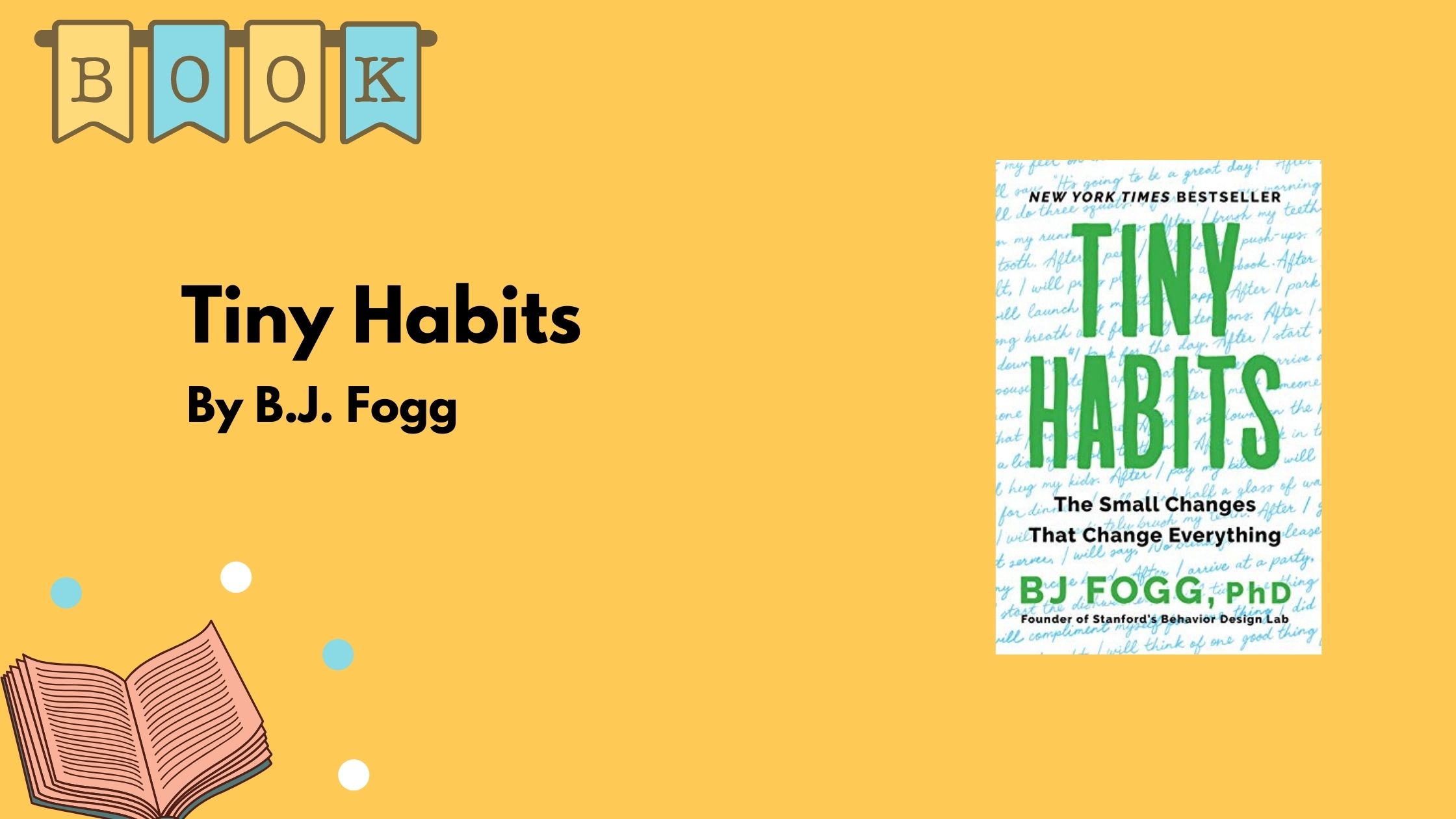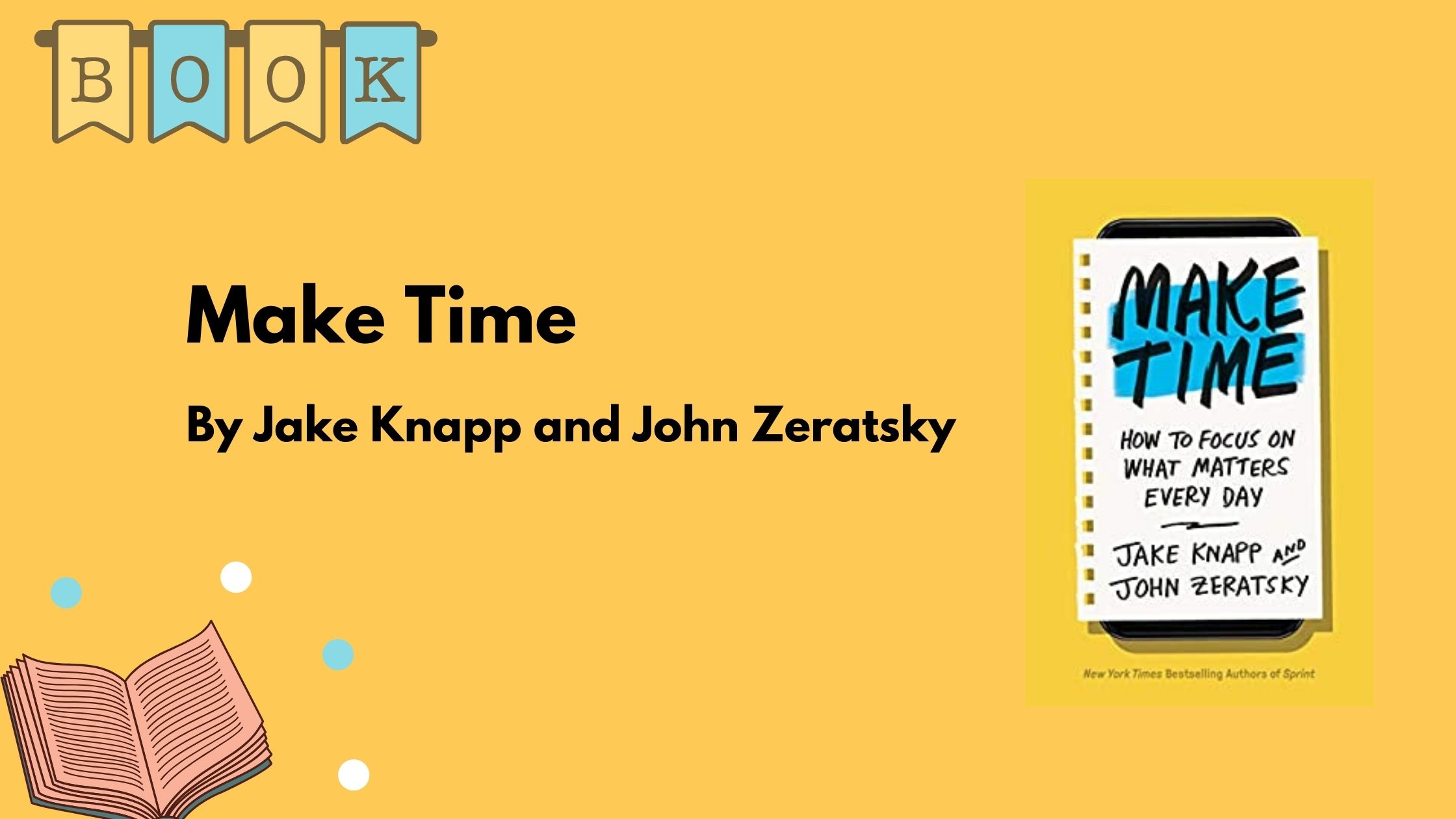Tiny Habits
Author: B.J. Fogg
Rating: ⭐⭐⭐⭐⭐
The book introduces a very structure approach to designing your behavior to adopt or stop a habit . It debunks some myths about not being able to build a new habit and outlines simple steps and examples on how to start tiny and naturally grow those tiny steps into an automatic habit.
💡 I’m use Amazon referral links, those links help keep this blog running ⛑️
🚀 The Book in 3 Sentences
- Not being able to keep a habit doesn’t mean there is something wrong with you , it’s behavior design flaw not a personal one.
- To have a new habit you need to have motivation , ability and a prompt.
- Break the habit into tiny , specific and easy to do behaviors that can fit in your daily routine.
🎨 Impressions
The book provides a break down of behavioral design behind adopting a habit and designing your routine to accommodate it with the least possible friction.
How I Discovered It
While searching for books similar to Atomic habits , I found a lot of good reviews about this one.
Who Should Read It?
Anyone struggling to adopt or even stop a habit.
☘️ How the Book Changed Me
I think more of designing my behavior to adopt or stop a habit , my approach became more structured and I know the tools I need to have to incorporate a new habit into my daily routine. This book in addition to “Atomic habits” helped me to build a reading habit everyday .
✍️ My Top 3 Quotes
- It’s important in the change process to feel good not feel bad and not to rely on willpower or set up accountability measures.
- No behavior happens without a prompt
- Go big or go home is a recipe for self-criticism and disappointment.
📒 Summary + Notes
There is a huge disconnect between the “Want” and the “do” , where people mostly blame themselves (You don’t workout more , you don’t eat healthy enough ,…etc.) .It’s not your fault , the problem is with the approach itself not you. It’s a design flaw not a personal flaw.
There are 3 general steps for successful habits:
- Stop judging yourself
- Break aspirations into tiny behaviors
- Embrace mistakes as discoveries and use them to move forward
It’s important in the change process to feel good not feel bad and not to rely on willpower or set up accountability measures.
The essence of tiny habits is to take a behavior you want , make it tiny , find where it fits naturally in your life and nurture it’s growth.
We now have a scarcity mindset where we believe we don’t have enough time , so we say no to changes . The plan is to focus on small actions so we can start creating change without worrying about time. Tiny allows you to start now.
The fog behavior design model
B = M A P
Behavior = Motivation (desire to do a behavior) + Ability (capacity to do a behavior) + Prompt (cue to do the behavior)
The more motivated you are to do a behavior , the more likely you are going to do it.
The harder a behavior is to do , the less you are likely to do it = The easier it is , the more likely it will become a habit . This applies to good and bad habits , for example using your smartphone as an alarm , will most probably lead to infinite scrolling instead of sleeping.
No behavior happens without a prompt , when your phone rings , your motivation and ability to answer are always there to reply . You can disrupt a behavior you don’t want by removing the prompt or make it harder.
💡 Going back to the infinite scrolling behavior
Motivation is very strong ; it makes you happy by seeing your friends , getting likes , videos ,…etc
Ability ; very easy to use
But when you think about the prompt ; you can get a normal alarm clock or put your phone in another room.
Behavior troubleshooting steps
- Check to see if there is a prompt to do the behavior
- Check if you have the ability to do the behavior
- Check if you are motivated to do the behavior
Motivation is unreliable as high levels of motivation are unsustainable (motivation to buy a new house , or getting gym membership in January) , it also fluctuates day to day and even minute to minute .
Motivation towards abstraction doesn’t help (Eat healthy!! what to eat ? Is ice cream ok ? ,…..etc)
There is a big difference between aspirations and outcomes , most people think about aspirations.
Example :
Outcome : I want to read 5 pages everyday.
Aspirations : I want to read more.
Steps in behavioral design
- Clarify the aspiration ; make a clear concise outcome you want to achieve
- Explore behavior options ; list down all the ways you can think of that can achieve your aspiration , then rephrase the feasible ones to be more specific (Play with the dog Vs play fetch with the dog everyday in the afternoon after lunch)
- Match with specific behaviors you want to do; look for behaviors that are effective in realizing your aspiration (you want to do it and you can do it)
Wrong ways to think of a habit
- Guessing ; you see someone riding a bike on your way to work then you decide that this is how you want to commute
- Internet inspiration
- Doing what worked for a friend
There is always a misconception that you always need to go big or go home , so to change or have a new habit you need to make bold changes. You always only hear about those examples not because it’s the only successful way but because it is the exception not the norm.
Go big or go home is a recipe for self-criticism and disappointment.
Anatomy of Tiny habits
1. Anchor moment
An existing routine that reminds you to do the new tiny habit ; Example : after brushing your teeth or after dinner.
Try to match the location and frequency of the anchor moment with the tiny behavior ; if you need to do the habit 3 times a day , find an anchor you do 3 times a day and tie the tiny behavior to it
2. Start Tiny
A simple version of the habit you want to have starting after an anchor moment ; Example : 2 pushups after having breakfast
Tiny can be undercover ; you can start without making a big scene = No pressure
Tiny doesn’t rely on willpower or motivation ; focus on redesigning your environment , keeping habits tiny makes expectations low.
Motivation is unreliable but ability is ; make the behavior so tiny that you don’t need motivation to do it. You should design your behavior for consistency.
Get the tools that make the behavior easy to do ; Better walking shoes , tupperware for lunch at the office ,…etc
Example : want to make a habit of walking 3 miles a day ; your starter step can be putting on your walking shoes after breakfast , this tiny step will change your perception , suddenly walking won’t seem so hard until it will become automatic
When your motivation is high , we can do more difficult things but when it’s low we need to compensate by making the behavior tiny so we have the ability to do it.
Start tiny and when the habit wires in , you can grow it naturally as you become more skilled , stronger , capable , ….etc
3. Instant celebration
Whenever you do your tiny habit , celebrate ; create your own celebration whether it’s loud or simply in your head. Victory emotions will help your new tiny habit to wire up in your brain.
Create positive emotions attached to this tiny habit by celebrating immediately after doing the tiny habit.
Example : First time you used Uber , you must have compared it’s pros and cons with taxis but once you had your first ride and saw how pleasant and easy it is to use , it becomes automatic to always use Uber.
Don’t confuse rewards and incentives ; Getting a massage after running is an incentive , celebrating after running is a reward.
Rewards happen in milliseconds after the behavior and would probably cause the behavior to happen again , but incentives are not consistent and are not guaranteed to happen every time you do the tiny habit.
4. Find a good prompt
No behavior happens without a prompt , you get a notification , you check you mobile , the traffic is green you move.
On the same note , if there is no prompt , we don’t act. For example , You want to sue the new meditation app on your mobile , but it doesn’t send any notifications (no prompt) so by time you forget about it and never use it again.
It’s all about finding where the new habit fits into your day.
Share on:You May Also Like
Make Time
Authors: Jake Knapp and John Zeratsky Rating: ⭐⭐⭐⭐⭐ The book …
Tips - Get availability zones for an Azure region
Recently I was working on a Bicep project and I needed to find if a …
Continuously deploy your infrastructure via Bicep and azd
In this post, I will go through how the Azure Developer CLI (azd) can …




